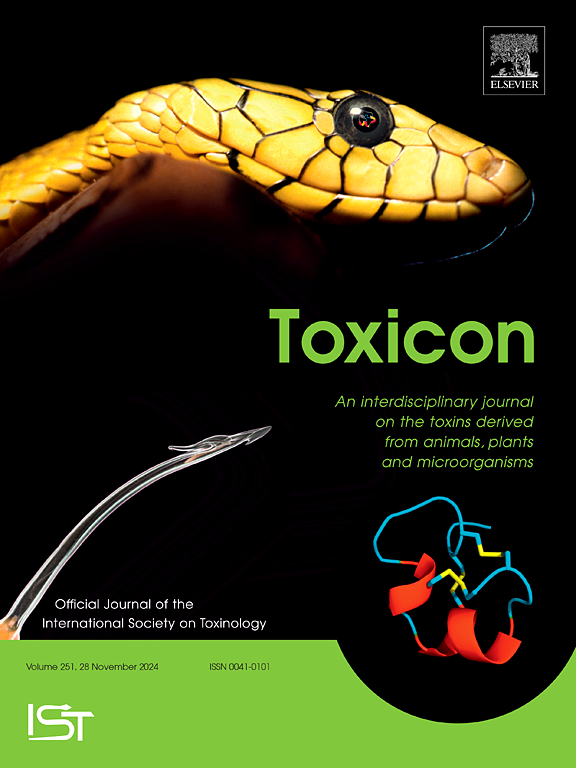Acute compartment syndrome leading to fasciotomy, severe morbidity and long-term disabilities following Sri Lankan Green pit viper (Peltopelor trigonocephalus) envenomation
IF 2.6
4区 医学
Q2 PHARMACOLOGY & PHARMACY
引用次数: 0
Abstract
Green pit viper (Peltopelor trigonocephalus) is a medically important endemic snake in Sri Lanka. Its envenoming commonly causes local effects such as pain, swelling, blistering, and lymphadenopathy and rarely causes venom-induced consumption coagulopathy as a systemic effect. Despite its frequent encounters in estates, commonly tea and cinnamon plantations, reports of envenoming are rare and limited to nine reports in the literature. An extensive literature review confirms no previous reports of compartment syndrome following Sri Lankan Green pit viper bites. We report two cases of acute compartment syndrome leading to fasciotomy, of which, in addition, case 1 patient developed venom-induced consumption coagulopathy.

斯里兰卡绿蝮蛇(Peltopelor trigonocephalus)中毒后导致筋膜切开术、严重发病和长期残疾的急性室间隔综合征。
绿蝮蛇(Peltopelor trigonocephalus)是斯里兰卡医学上重要的地方性毒蛇。它的毒液通常会引起局部症状,如疼痛、肿胀、水疱和淋巴结病,很少会引起毒液引起的全身消耗性凝血病。尽管经常在庄园(通常是茶园和肉桂种植园)中遇到这种毒蛇,但有关毒蛇咬人的报道却很少,文献中仅有 9 篇报道。广泛的文献回顾证实,以前没有关于斯里兰卡绿蝮蛇咬伤后引发隔室综合症的报道。我们报告了两例导致筋膜切开术的急性筋膜室综合症病例,其中第一例患者还出现了毒液引起的消耗性凝血病。
本文章由计算机程序翻译,如有差异,请以英文原文为准。
求助全文
约1分钟内获得全文
求助全文
来源期刊

Toxicon
医学-毒理学
CiteScore
4.80
自引率
10.70%
发文量
358
审稿时长
68 days
期刊介绍:
Toxicon has an open access mirror Toxicon: X, sharing the same aims and scope, editorial team, submission system and rigorous peer review. An introductory offer Toxicon: X - full waiver of the Open Access fee.
Toxicon''s "aims and scope" are to publish:
-articles containing the results of original research on problems related to toxins derived from animals, plants and microorganisms
-papers on novel findings related to the chemical, pharmacological, toxicological, and immunological properties of natural toxins
-molecular biological studies of toxins and other genes from poisonous and venomous organisms that advance understanding of the role or function of toxins
-clinical observations on poisoning and envenoming where a new therapeutic principle has been proposed or a decidedly superior clinical result has been obtained.
-material on the use of toxins as tools in studying biological processes and material on subjects related to venom and antivenom problems.
-articles on the translational application of toxins, for example as drugs and insecticides
-epidemiological studies on envenoming or poisoning, so long as they highlight a previously unrecognised medical problem or provide insight into the prevention or medical treatment of envenoming or poisoning. Retrospective surveys of hospital records, especially those lacking species identification, will not be considered for publication. Properly designed prospective community-based surveys are strongly encouraged.
-articles describing well-known activities of venoms, such as antibacterial, anticancer, and analgesic activities of arachnid venoms, without any attempt to define the mechanism of action or purify the active component, will not be considered for publication in Toxicon.
-review articles on problems related to toxinology.
To encourage the exchange of ideas, sections of the journal may be devoted to Short Communications, Letters to the Editor and activities of the affiliated societies.
 求助内容:
求助内容: 应助结果提醒方式:
应助结果提醒方式:


